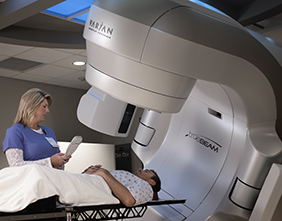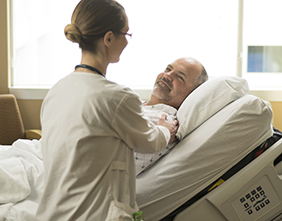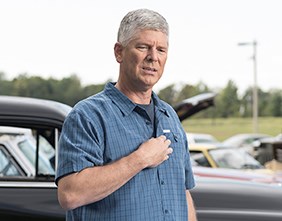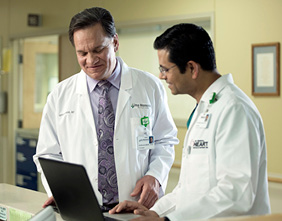A Pediatric Development Therapist’s Guide to a Baby Registry
posted on: 3/28/2019 12:24:55 PM
“Expecting? A guide for what to add and what NOT to add to your baby registry-- from a pediatric developmental therapist’s perspective”
-Tiffany Steinmetz, PT, DPT

CONGRATULATIONS! You’re expecting your first (or maybe your second, third, fourth, fifth…) child! There are so many emotions that you feel when you transition into motherhood or fatherhood as a first-time parent or as you add to your existing family. Parents may feel joy, fear, love and sadness. What a roller coaster, right? With these various emotions, body & lifestyle changes, expectations and pressures…I would suspect that most soon-to-be-moms and dads eventually find themselves feeling overwhelmed. Having a child in the 21st century is completely different than it was 50 or even as little as 10 years ago. Everywhere you look you find new, exciting and different products that are made to supposedly make parents’ lives easier and more comfortable -- products that let you or your baby sleep longer, eat better, make them smarter or happier than ever before! Sometimes you hit the jackpot and are able to invest in things that truly do help and facilitate optimal development as a baby ages; however, there are several items out there that may hinder certain milestones. That is why we would like to provide a complimentary guide, with developmental milestones in mind, for recommended items to add to your baby registry, as well as things to try to AVOID for your baby’s first year. Several of these items compliment the safe sleeping guidelines made by the American Academy of Pediatrics (AAP). With that being said, ALWAYS follow your pediatrician’s recommendations, as every baby is different, and some often require specific items that may not follow this guide. If you’re unsure, ask your pediatrician or contact any of our developmental therapists at Lima Memorial Health System.
Recommended items:
- A flat surface for baby to sleep that meets AAP’s safe sleeping guidelines and the safety standards of the Consumer Product Safety Commission (CPSC). Sleeping on a flat surface helps prevent or further contribute to any muscle tightness that may lead to torticollis (“wry/twisted neck”), or a flattening or asymmetrical head shape.
- Play yard or travel crib
- Bassinet
- Crib
- Firm mattress
- Tight fitting sheet
- Infant sleep clothing
- Wearable blanket that may allow child to be swaddled, if needed, until they begin rolling over
- Baby-wearing carrier or sling
- Look for products that allow baby’s hips to be bent and spread apart with the thighs supported to promote healthy-hip positioning
- Cups, utensils and plates that encourage self-feeding
- Bonus points to parents who allow their child to get “messy” with food
- Blocks or toys that can be stacked
- Books
- Toys that facilitate “modeling” from parents, provide tactile feedback and allow safe exploration of their environment
- Floor activity mat that encourages supervised tummy time
- Boppy pillow
- No cost—your own lap or chest
- Walking push toys - without having the ability to sit in the device
- “Walkers” are no longer recommended by the AAP due to risk of injury
Items to AVOID:
- Sleeping devices that recline or position a baby against gravity, especially before head control is developed, or if the baby is known to have muscle tightness or preferred head positioning when tired / sleeping
- Sippy cups with “spout” lids, as these may affect oral and speech development
- Sitting devices that provide complete trunk support
- Jumpers, walkers and “exersaucers”
- Inhibits development of active trunk strength
- Babies develop strength from the head down, these items often promote leg strengthening before the trunk, which may contribute to an “extensor dominance” and delay reflex integration
If used, limit amount of time spent in device to allow for plenty of opportunities for “floor play” to promote active strengthening. Except for walkers which, as mentioned above, are no longer recommended by the AAP.
- Tablets / phones
- Many apps and electronic devices often advertise that they assist with development or education; however, research has shown that use of these devices can negatively impact postural development, fine and gross motor skills, speech, as well as the development of play and social skills.
- Help your child achieve developmental milestones by playing with them with real toys and spending time reading with them
The exciting part about being a parent is that your child will always keep you guessing. You may find yourself buying expensive products that you are convinced will be your child’s favorite, just to find them being happy playing with kitchen utensils, Tupperware, pots, pans or cardboard boxes! Happy parenting!
Our developmental therapists would love to answer any questions you may have regarding your child’s development. To speak with a therapist, call the outpatient rehabilitation office at 419-226-5045.
References
Baby Carriers, Seats, & Other Equipment. (n.d.). Retrieved from https://hipdysplasia.org/developmental-dysplasia-of-the-hip/prevention/baby-carriers-seats-and-other-equipment/
Moon, R. Y., MD, FAAP. (2015, December 19). How to Keep Your Sleeping Baby Safe: AAP Policy Explained. Retrieved from https://www.healthychildren.org/English/ages-stages/baby/sleep/Pages/A-Parents-Guide-to-Safe-Sleep.aspx
Website




